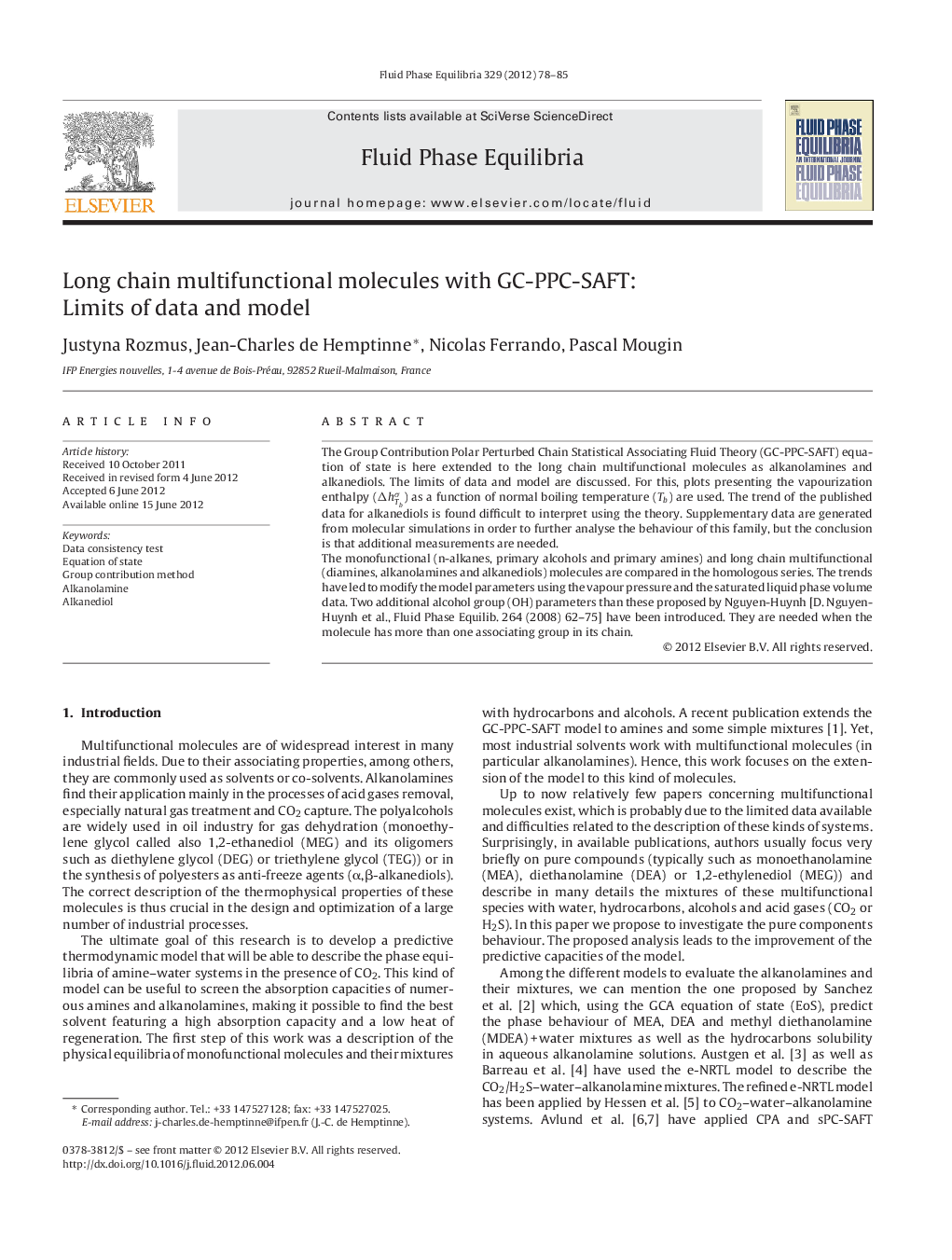| Article ID | Journal | Published Year | Pages | File Type |
|---|---|---|---|---|
| 204006 | Fluid Phase Equilibria | 2012 | 8 Pages |
The Group Contribution Polar Perturbed Chain Statistical Associating Fluid Theory (GC-PPC-SAFT) equation of state is here extended to the long chain multifunctional molecules as alkanolamines and alkanediols. The limits of data and model are discussed. For this, plots presenting the vapourization enthalpy (ΔhTbσ) as a function of normal boiling temperature (Tb) are used. The trend of the published data for alkanediols is found difficult to interpret using the theory. Supplementary data are generated from molecular simulations in order to further analyse the behaviour of this family, but the conclusion is that additional measurements are needed.The monofunctional (n-alkanes, primary alcohols and primary amines) and long chain multifunctional (diamines, alkanolamines and alkanediols) molecules are compared in the homologous series. The trends have led to modify the model parameters using the vapour pressure and the saturated liquid phase volume data. Two additional alcohol group (OH) parameters than these proposed by Nguyen-Huynh [D. Nguyen-Huynh et al., Fluid Phase Equilib. 264 (2008) 62–75] have been introduced. They are needed when the molecule has more than one associating group in its chain.
► GC-PPC-SAFT is extended to alkanolamines and alkanediols. ► Plots of the vapourization enthalpy versus normal boiling temperature allow identifying trends. ► Experimental data and theoretical predictions diverge. ► Supplementary data from molecular simulations are generated for alkanediols. ► Multifunctional molecules vapour pressures and liquid volumes are correctly predicted.
